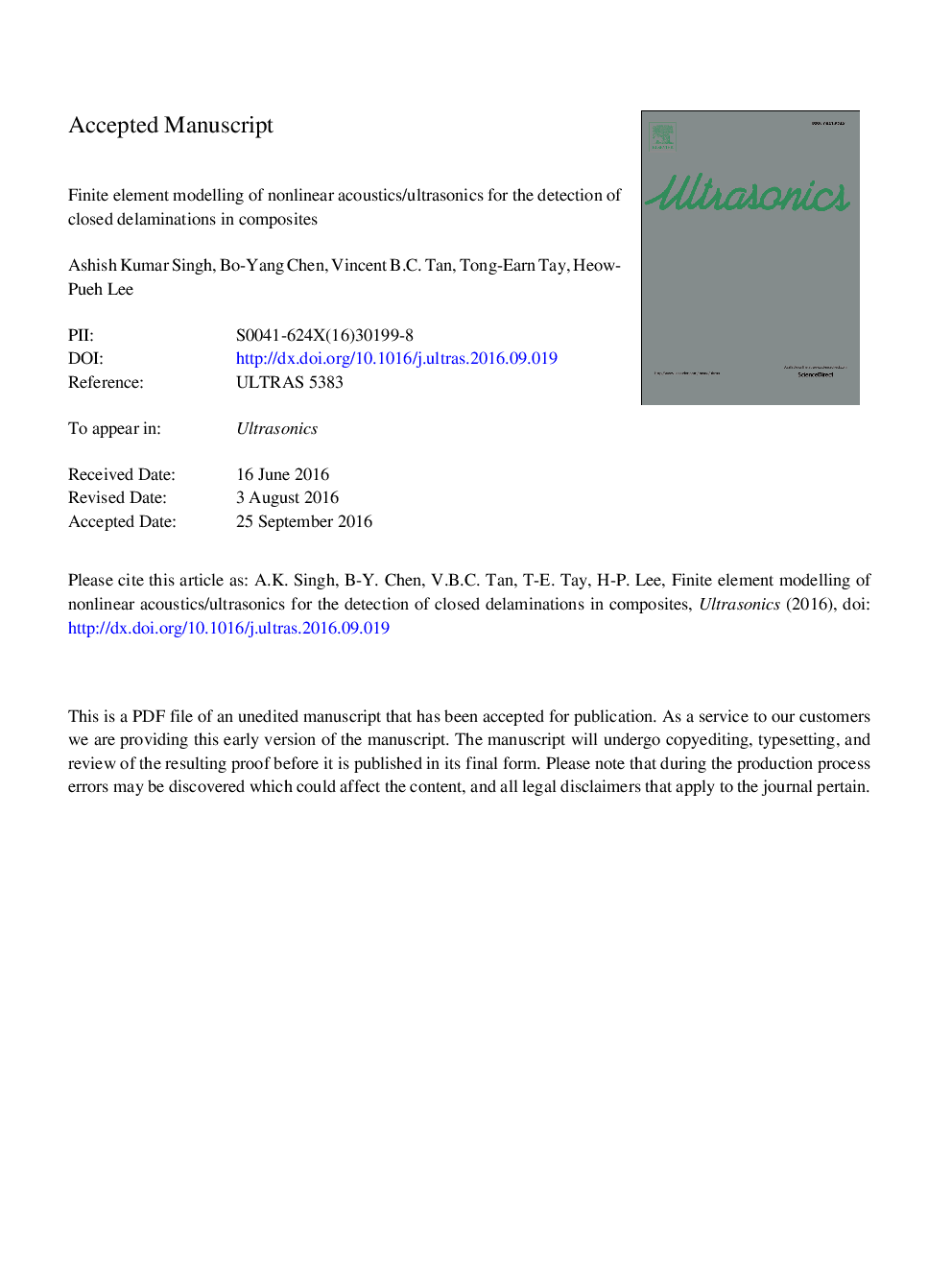| Article ID | Journal | Published Year | Pages | File Type |
|---|---|---|---|---|
| 5485307 | Ultrasonics | 2017 | 45 Pages |
Abstract
Linear ultrasonics methods based on the principle of reflection, transmission, dissipation of sound waves have been traditionally used to detect delaminations in composite structures. However, when the delamination is in very early stages such that it is almost closed, or closed due to a compressive load, the linear methods may fail to detect such cases of delaminations. Nonlinear acoustics/ultrasonics have shown potential to identify damages in composite structures which are difficult to detect using conventional linear ultrasonic methods. The nonlinear method involves exciting the structure with a sinusoidal signal of certain (or multiple) frequency and observing the vibrations of the structure. The vibrations of the damage region differ significantly from intact regions and can be used to identify the damage. However due to the complex and varying nature of the nonlinear phenomena created by the interaction between the exciting signal and the damage, there are many variables at play which can lead to success or failure of the method. While experiments lead to the establishment of the method to be used as a damage detection technique, numerical simulations can help to explain the various phenomena associated with nonlinearity. This work presents a quick approach to model the nonlinear behavior caused by closed delaminations. The model is validated with a previously available approach for nonlinear vibrations modeling and a comparison is made between the two. The local nature of the nonlinearity enables to map out the area of damage in the structure. Additionally, a few parametric studies are performed to study the effect of various parameters related to the nonlinear phenomenon.
Related Topics
Physical Sciences and Engineering
Physics and Astronomy
Acoustics and Ultrasonics
Authors
Ashish Kumar Singh, Bo-Yang Chen, Vincent B.C. Tan, Tong-Earn Tay, Heow-Pueh Lee,
